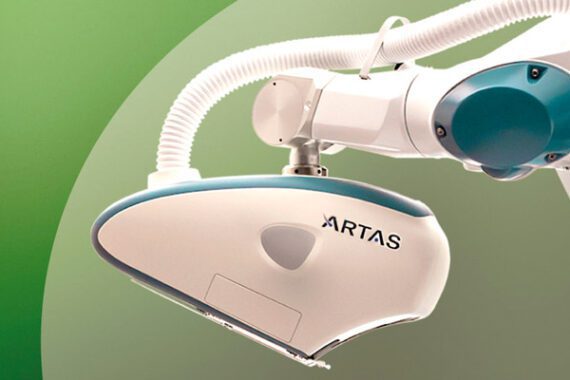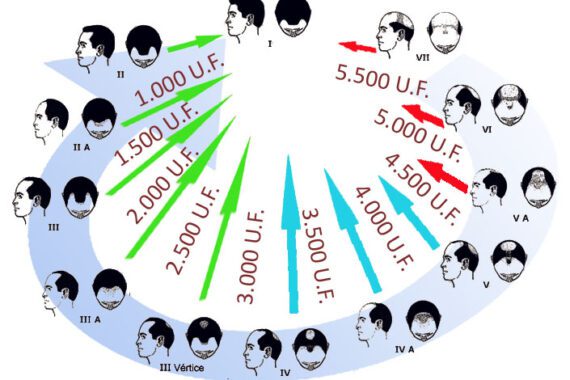Robotic hair implant: In this article we will compare the two methods since many...
Our hair transplantation technique is the most advanced one
Free consultation with our specialists






DEDICATED CLINIC
At Mediarte Medical Center we are so confident in our work that we offer a written guarantee on the result allowing our patients to fulfill their dream of recovering their hair with the FUE technique, with no scar, no pain, no sutures, no scalpel and a quick recovery.
WHY CHOOSE US?
We want to give you a reliable and lasting solution, download our presentation and see all the benefits we have for you.
Our Services
Real Testimonials
- Melissa Martínez, Presentadora de TVIn Mediarte they are specialists in all hair matters, hair treatments, eyebrows, beard and others, I recommend them.
- Juan David Gálvez, Cantante ``Alkilados``We would like to congratulate the entire Mediarte team that works to change lives with their highly effective treatments, thank you for your work.
- Ana Karina Soto, Presentadora TVFor all those men and women who are losing their hair, I invite you to visit Mediarte Medical Center, specialists in hair transplant
Benefits Mediarte Colombia
Our professionals are dedicated full time to FUE hair transplant, we perform procedures on a daily basis so we have the theoretical knowledge and practical skills necessary to obtain high quality results. At Mediarte Medical Center we are so confident in our work that we offer a written guarantee on the result allowing our patients to fulfill their dream of recovering their hair with the most advanced technique, with no scar, no pain, no sutures, no scalpel and a quick recovery.
Our results speak for themselves, which is why 98% of our patients recommend us. We are so confident in our work that we provide a written guarantee for the growth of the implanted hair.
The price includes:
- Medical Fees
- Feeding
- Prophylactic Medications
- Controls
- Capillary Therapy
This is the most frequently asked question related to hair transplantation, however there is no single answer, this depends on factors such as:
- Degree of alopecia
- Hair color
- Hair thickness
- Skin color
To get an idea, we present the estimated values:
______ TYPE OF UNITS REQUIRED
- Grade I 1,000 – 1,500
- Grade II 1,500 – 2,500
- Grade III 2,500 – 3,500
- Grade IV 3,500 – 4,500
- Grade V 4,500 – 6,000
- Grade VI 6,000 – 8,000
- Grade VII 8,000 and above
Follicle Zone
- Zone 1 2,800
- Zone 2 2,450
- Zone 3 4,900
- Zone 4 10,500
- TOTAL 20,650
For more information visit our blog.
Not necessarily, if the size of the area to be covered is small, only a part of the donor area can be shaved and this can be covered with the rest of the hair.
At the beginning there is a telogen effluvium, i.e. a massive loss of hair around the implantation areas which accentuates the alopecia in the first three months, from the fourth month the implanted hair begins its growth phase, first as a kind of fuzz or very fine fiber, to become after a few weeks in thick and terminal hair. We can say that the improvement is noticeable from the fifth month and evolves positively up to one year after the procedure.
The implanted hair will last until old age as they are genetically immune to DHT, which causes alopecia.
It depends on the area to be covered and the number of follicles to be implanted, but as an estimate we can say that it ranges between six and ten hours per session.
The only pain that will be felt is when local anesthesia is applied in both donor and recipient areas. The procedure is minimally invasive, ambulatory and does not require the use of a scalpel.
Hair loss is normal up to a certain point, depending on factors such as gender, age and the coexistence or not of any disease.
Hair grows naturally at a rate of approximately 0.35 mm per day. And, on a daily basis, it is normal to observe the replacement (or loss) of 25 to 30 hairs.
Some authors describe that it can even be considered normal to lose up to 40 hairs per day. More than this number, implies the need to determine the cause.
When assessing the severity of hair loss, one of the tests performed is the Hair Count. In this test, regardless of the patient’s age or sex, losses of 100 or more hairs per day are considered abnormal.
According to the hair growth cycle, the hair follicle (which is the anatomical unit where hair is born and grows throughout the body) goes through three very distinct phases:
- Anagen Phase: which lasts from 2 to 8 years, and where active hair growth is evident. Up to 90% of your follicles are located in this phase.
- Catagen phase: a transitional phase lasting 4 to 6 weeks. Up to 3% of your follicles will be found here.
- Telogen phase: or resting phase, which lasts about 3 months. Up to 15% of your follicles will be found here.
At the end of the Telogen Phase, the hair (already inactive or dead) is naturally expelled and “falls out”, thus initiating a new cycle in the follicle that will give way to a completely new hair. Each follicle in your body will make 10 to 30 cycles of these during what is called its “lifespan”.
However, some medical conditions, heredity, age and other environmental factors can accelerate this “wearing out” process, thus accelerating the cycles, increasing and advancing hair loss.
To men and women, indistinctly.
Evidently, it predominates in the male sex, where we find up to 70% of cases of early onset (under 30 years of age).
However, as age progresses, these percentages become more balanced and after the age of 60 there is no particular predominance; only that given by the greater expression (alopecia is expressed to a greater degree) that occurs in men.
Additionally, it affects people with some particular pathological conditions and patients undergoing chemotherapy treatments for various pathological conditions.
Among the general measures to prevent hair loss we can list:
- Regular cleansing with products that do not harm the scalp.
- Early care and treatment of scalp infections.
- Nutritional supplementation or adequate and regular consumption of vitamins A, D and E (antioxidants) and minerals that promote hair growth (iron, zinc and selenium).
- Avoid excessive unprotected sun exposure.
- Adequate treatment and control of pathologies that favor or may be accompanied by hair loss (hypothyroidism, diabetes and others).
Indeed, yes. If a diagnosis of a specific type of alopecia is established within the different classifications that exist for women, the surgeon may recommend medical treatment or hair transplantation.
There is an absolute indication for hair implantation in the case of a firm diagnosis of some type of Cicatricial Alopecia (primary, secondary or special).
In cases of Non Cicatricial Alopecia, the indication is more aesthetic and psychological (due to the impact it has on the psychology of the person), than medical.
The first thing you should do, prior to making the decision to undergo a hair transplant, is to consult with the doctor who specializes in the technique. In this consultation, the doctor will make a detailed evaluation of your particular case and will be able to give you the best recommendations.
Once the surgical technique to be used in your case has been selected, we will proceed accordingly.
In addition to the obligation to comply with mandatory preoperative tests, whose list will be determined by the surgeon with the anesthesiologist, the preoperative management is similar to that of any other surgical procedure, the patient must keep at least 12 hours of previous diet avoiding the consumption of dairy products and caffeine, having greater relevance this period in the case of the TIRA technique (not used by Mediarte).
Prior to the surgical procedure, it is considered necessary to perform:
- Complete hematology.
- Protombin time (PT).
- Partial Thromboplastin Time (PTT)
- HIV serology
- VDRL Serology
- Other as deemed appropriate by the physician
The implanter pen or IMPLATER is commonly referred to as a “CHOI pen”.
This is a special device that was designed at Kyungpook National University (KNU) in South Korea. Its function is to implant the follicles in the so-called recipient site (in a single procedure), reducing bleeding but in return the follicles may be separated from each other.
Essentially, there are 3 techniques of hair transplantation:
- FUE (Follicular Unit Extraction): as its name indicates, the follicular units are extracted individually, being a process that requires high precision and meticulousness. It is performed under local anesthesia, and up to 3500 units can be extracted in a single procedure, suggesting no more than this because they should be transferred to conservation as soon as possible. Several surgical times may be performed until the transplant is completed. It does not leave scars in either area.
- DHI (Direct Hair Transplantation or Direct Hair Implantation): it is performed using the IMPLATER, or CHOI type pen. The follicular units are also extracted one by one, but they are taken from the donor area to the recipient area immediately, also requiring great skill and precision on the part of the surgeon, with the advantage that the entire transplant can be performed in a single surgical time. As above, it is performed under local anesthesia.
- TIRES (FUSS, FUT or Follicular Unit Transplant): long, thin strips of scalp are surgically removed and the donor area is sutured. Subsequently, the follicular units that will be transplanted in a second surgical stage are divided and classified. Of course, it leaves a scar in the donor area and has as a possible complication bleeding after surgery.
In Mexico the 3 techniques described above are used: FUE, DHI and TIRA, with the first two being preferred by most surgeons.
The TIRA technique has very particular indications and is generally reserved for those cases where it is not feasible or useful to perform the other two techniques.
Normal hair transplantation lasts between 3 and 10 hours, on average, depending on the experience of the surgical team, the technique chosen and the complexity of the case.
The existence of three “times” is considered:
- Extraction of the grafts. Follicular units will be taken from the “donor area”; usually from the posterior region of the skull (occipital). In this first stage, the viability of the graft must be guaranteed, which depends on the type of hair, the technique, vascular factors, among others.
- Preparation of the grafts. Once the follicular units have been extracted, they will be arranged in rows of 25 or 50 units ensuring the best survival of the harvested graft (monitoring temperature and hydration).
- Placement of the grafts. The end of the procedure: the placement of the grafts (one by one) in their respective “nests” in the “recipient area” (the site where the graft will be placed).
With the TIRA method (not used by Mediarte) the scars are noticeable, if the scalp is detailed and checked.
DHI and FUE techniques leave microscopic scars, which are not visible to the naked eye.
With the use of FUE and DHI techniques, the disability is almost zero. With DHI, a patient can return to work two days after the implant is performed; with FUE, return to work is possible the following day. Therefore, although they can be performed any day of the week, in those patients who have a high time limitation due to their working conditions, these procedures are preferably performed on Fridays, allowing them to return to work on the following Monday.
With the TIRA technique (not used by Mediarte) at least 7 days of post-surgical recovery and rest will be necessary in order to avoid complications, depending on the extent of the transplant.
In the first stage, the necessary follicular units will be taken from the donor area (between 800 and 3,000) taking into account that these should only be of one or two hairs at the most, and in the second stage, the follicular units will be implanted one by one in the recipient area previously determined.
It is an extremely laborious procedure that requires high skill on the part of the surgeon in order not to damage the follicular units and not to produce very wide incisions in the face that become evident later on.
After the beard transplant it will be indispensable:
- Sleep on the back during the following 7 days, to avoid traumatizing the transplanted follicular units.
- The area shall not be washed until after the first 48 hours. After this period, adequate cleaning of the surgical area (donor and recipient) should be maintained, washing the beard area with shampoo and abundant water.
- Application of antibiotic ointment or cream.
- Above all, avoid scratching or manual manipulation of the donor and recipient areas (there may be occasional itching in either area).
- Since it is a facial surgery, the patient must rest from work for at least 72 hours after the procedure.
- Avoid sun exposure, tobacco smoke or the ingestion of alcoholic beverages during the first week after surgery.
- The first shaving shall not be performed before the tenth day after transplantation. It is normal for all the transplanted hair to fall out by the second or third week, after which the new hair will come out.
Generally, beard transplantation is performed on young men whose beard grows in “patches” producing an unkempt appearance and on those patients who for aesthetic reasons wish to have a fuller beard but who naturally do not have enough hair in the area.
Additionally, it could be performed by those who wish to disguise a particular type of scar or defect, such as a scar following surgical correction of a cleft lip or traumatic scar.
The base cost is $30 for each follicle up to 2,000 follicular units (a follicular unit can have between 1 and 4 hairs); additional follicles, i.e. from follicle 2,001 onwards, are charged at 50% ($15), and these costs include: medical fees, supplies, postoperative medications, platelet-enriched plasma session and controls.
For more information visit our PRICES section.
With the use of the FUE technique, it is necessary to avoid exercise for at least 10 days so that the donor area can heal properly, but the patient can return to work after 24 to 48 hours.
In the case of FUT or TIRA, recovery will be necessary for 3 to 4 weeks, depending on the extent of donor tissue taken.
Controls will be performed at week 1, 2 and 3 after the transplant, and then monthly until the surgeon decides on the definitive discharge.
During the first seven days after the procedure, with any of them, it is essential to rest (avoid exercising), eat a proper diet, very natural as far as possible, and supplement with vitamins A, D and E, and with iron, zinc and selenium.
Any other particular indication necessary will be made by the surgeon.









